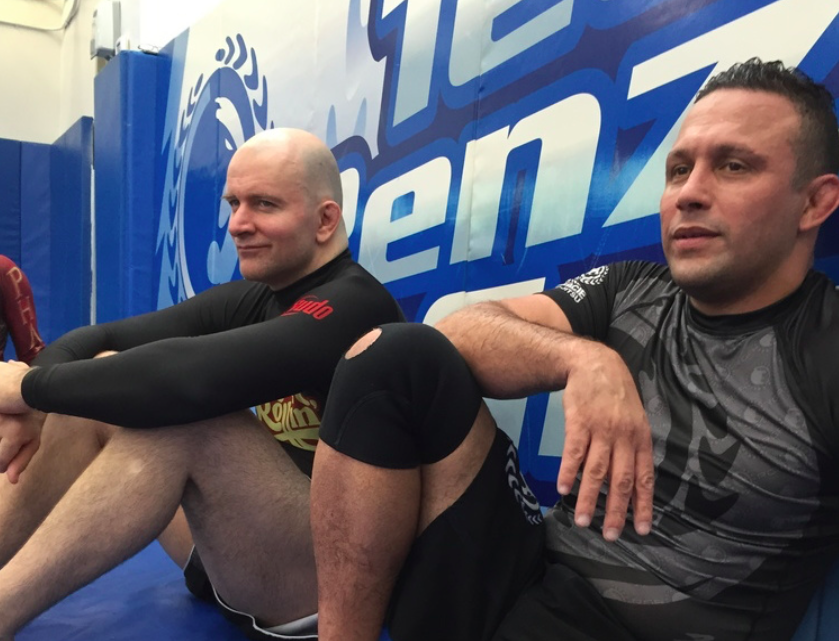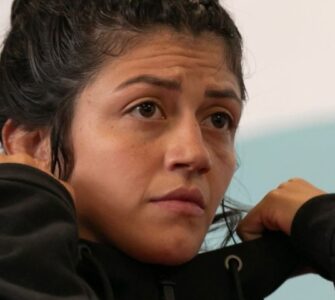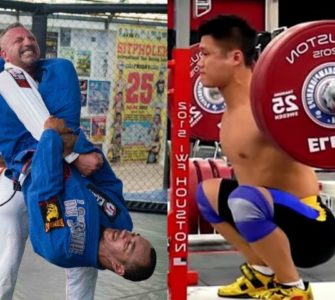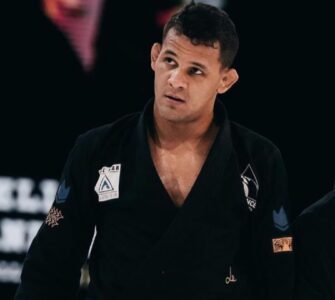In grappling, do you need to perfect moves equally on both sides? Most grapplers when drilling a move, will usually work both sides equally. John Danaher recently answered the question on his Facebook.
John Danaher, BJJ black belt under Renzo Gracie, known as one of the best BJJ instructors in the world shares his thoughts on his leg lock system, and how he built his ‘Danaher Death Squad’ around them.
The New Zealand born black belt has been praised by the BJJ community as being a master and brain of the art. Danaher is a highly intelligent individual, who has a Master degree in philosophy from Columbia University, and is totally focused on the evolution and improvement of Jiu-Jitsu. He is also the submission coach of none other than former UFC Welterweight Champion George Saint Pierre, Travis Stevens, Garry Tonon, Eddie Cummings and Gordon Ryan.
Danaher trains and teaches Jiu jitsu at Renzo Gracie’s Academy in New York.
Danaher’s thoughts:
Body asymmetries in jiu jitsu: Students often ask me if they ought to perfect the various moves of jiu jitsu equally on both sides of their body. They are generally surprised when I say no. You do need to have strong attacks and defense on both left and right sides, but that does not imply that you ought to practice each and every move equally on both sides. Indeed, the overwhelming majority of champions in the sport heavily favor one side of their body for each given move.
If I have a very good rear strangle with my right arm, but a poor one with my left, it is easier and less time consuming for me to learn some simple transitional tricks to ensure I can always move my opponent into a right arm strangle when I get behind him, than it is to learn and perfect the rear strangle with my left arm. Our bodies are not symmetrical, it makes sense that our jiu jitsu game will reflect this fact.
Now we must not confuse two issues here. We must be effective on both sides, but we can be effective in very different ways on both sides. Saying that I don’t need to have equal efficacy in all my favorite moves on both sides is NOT saying that I can have a strong and weak side overall.
Let us look at the example of escaping side pins. I don’t know which side my opponent will pass towards – I don’t control that as much as he does. Accordingly, I must have effective escapes from side pins on both sides of my body. I might have a very strong elbow escape on my right hand side, but a weak one on my left. I can make up for this deficiency by (for example) having a very strong side escape to my knees on the left hand side – thus I am effective on both sides, I just use different methods.
There is nothing inherently wrong with the notion of practicing all moves on both sides (my student Georges St-Pierre is fanatical about this). My point is that it is not necessary as evidenced by the fact that most champions have strongly asymmetrical games. Nor is it time efficient, as most moves can be put in the context of a simple set up that will carry the opponent into a position where he can easily be attacked on your strong side. Those set ups are generally much easier to learn than the much more time consuming route of mastering the complete move on the other side.
I have a respectable high elbow guillotine on my right side, but a poor one on my left. I make up for this by the fact that I have respectable arm-in guillotine strangle on my left side, though a poor one on my right. Thus I can perform a respectable guillotine on both sides – just different versions. In this way the physical asymmetries in my body that could potentially create problems for my guillotine attacks, can be overcome.


















